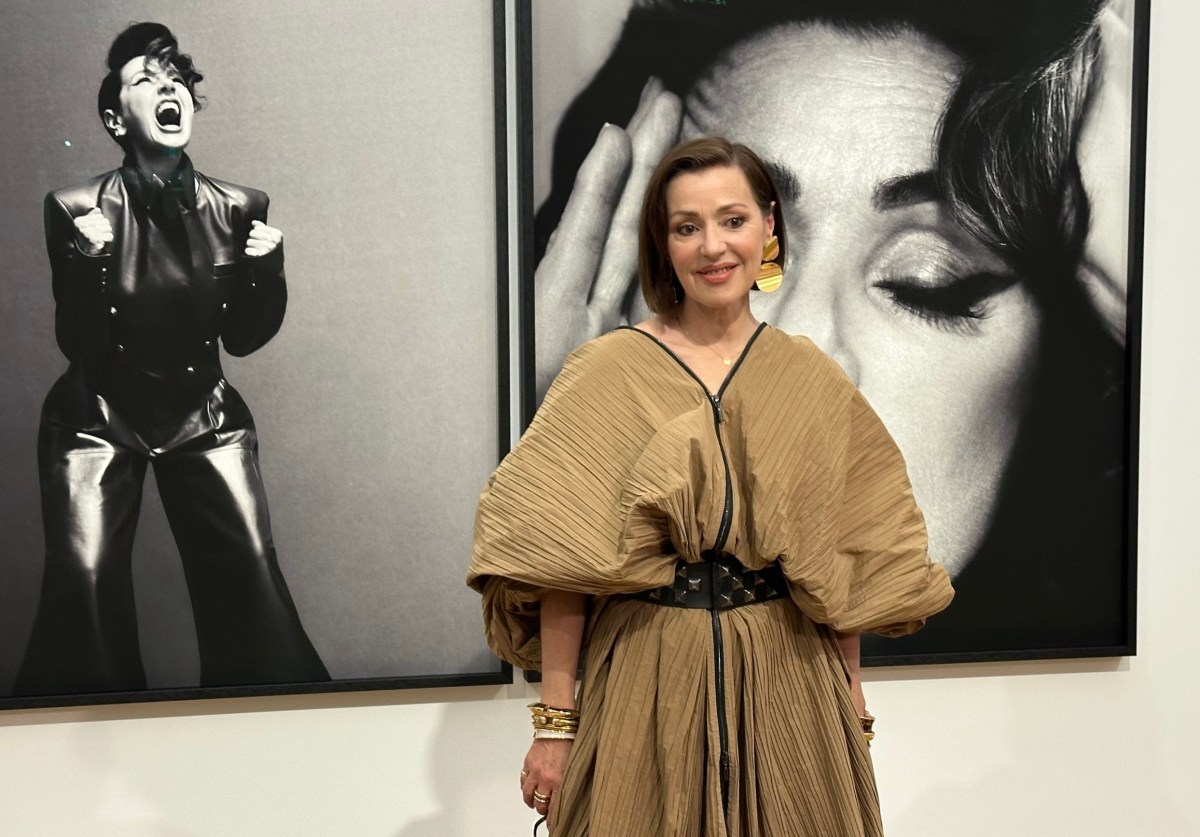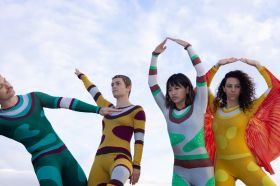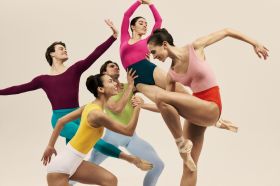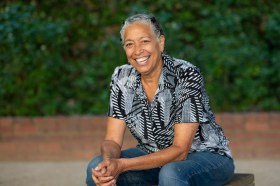As Tina Arena AM self-declared, on the recent reveal of her photographic portrait at the National Gallery of Australia, ‘I am no shrinking violet.’ She adds, ‘I deserve to be on these walls.’
It was a refreshing and genuine affirmation of not only what it takes to be an artist in our times, but more so, testament to the challenges faced in her 50-year career – especially as a female performing artist born to immigrants.
Arena’s photographic diptych was taken by renowned fashion photographer George Antoni, and marks 50 years in the business since her debut on the Young Talent Time team. Antoni says that ‘growing up as a Lebanese boy in the 80s with three older sisters, Tina Arena was nothing short of an icon in our home. Beyond her extraordinary voice, she was part of a powerful wave – children of immigrants forging a new path to success in Australia media.’
He has captured that complex narrative beautifully.
ArtsHub was there at the portrait’s reveal, and spoke with Arena, who offered essential words of wisdom for all artists.
Tina talks: jump ahead
Tina Arena: I deserve this
‘My first reaction was I gasped because it is not what I expected. All I was hoping to achieve was that my spirit would be able to come through in the photos, and I think that we have collectively achieved that.
‘I do believe anything is possible. I had always hoped that I would be able to be on these walls, because I feel that I deserve to be on these walls. I worked very hard, I represent my country every time I step off these shores – after the contribution of 50 years, that is what I feel.’
Tina Arena: I don’t know how I have survived
‘This year, I celebrate 50 years in show business. Can you believe it? Because I can’t. Let me tell you, it certainly has not been an overnight success.
‘Over the decades, I’ve had the privilege of building a life in the arts, often swimming against the tide, and I’ve seen, particularly here in Australia, how tall poppy syndrome can quietly, and sometimes not so quietly, clip the wings of those who fear to dream too big, or speak too boldly.
‘But here’s the thing, it doesn’t just hold back individuals. It stifles expression, innovation and progress.
‘We must be so careful not to shred the voices that challenge us, that prove us, that show us who we are, because art doesn’t thrive in fear or conformity. It thrives in courage.
‘The thing I am becoming really familiar at this point in my life, is I don’t know how I have survived.’
Tina Arena: I love getting out of the safety zone
‘For me, it is not work – it is a genuine love, and there are constant things being learnt and revealed. I love getting out of the safety zone. I am always about pushing the boundaries as much as a I can.
‘I don’t believe art is about being safe – in terms of creativity – you need to push the boundaries and go to zones where you don’t feel comfortable.’
Tina Arena: on recognising the contribution of immigrant Australians
‘[The unveiling of this portrait] is probably one of the biggest moments of my life because it symbolises the contribution that has been made to the cultural landscape of Australia.
‘George grew up watching me on television, and I suppose as Europeans we do have a spiritual connection because in the 1970s we weren’t really represented, and some extraordinary challenges came with being a public figure in the 1970s.
‘I am one of many of the representatives of the Europeans who came to this country and made a proper contribution – people who have tread the boards in a really genuine way – and sometimes Australians forget to acknowledge that – and that deserves to be revered.
‘Doesn’t matter where you come from, if you come here with the right intentions and the dream to just do better, that is what it is about for me, and I think that is what [this diptych] symbolises.
‘I hope it give people hope to never lose that desire and just soldier on.’
Tina Arena: I deserve to be called an artist
‘I think, as an Australian woman of ethnic descent, I have had some difficult challenges, to just allow people to allow me – and give me the respect – to decide what I want to do, because ultimately it comes to art is the vision of the artist. It is not someone else’s vision. It took me a long time to impart that in the kindest way.
‘I have always been strong, and I have certainly been met with some challenges along the way. It took me a long time to accept that I was an artist. I really struggled with the term because I felt that I didn’t deserve it.
‘And, once I got over that and realised that this is really who I am, and I should be truthful to myself, I began to set my boundaries. And I just hope, that over time, people understand that is the journey of any artist.’
Tina Arena: don’t tell me how to do my job
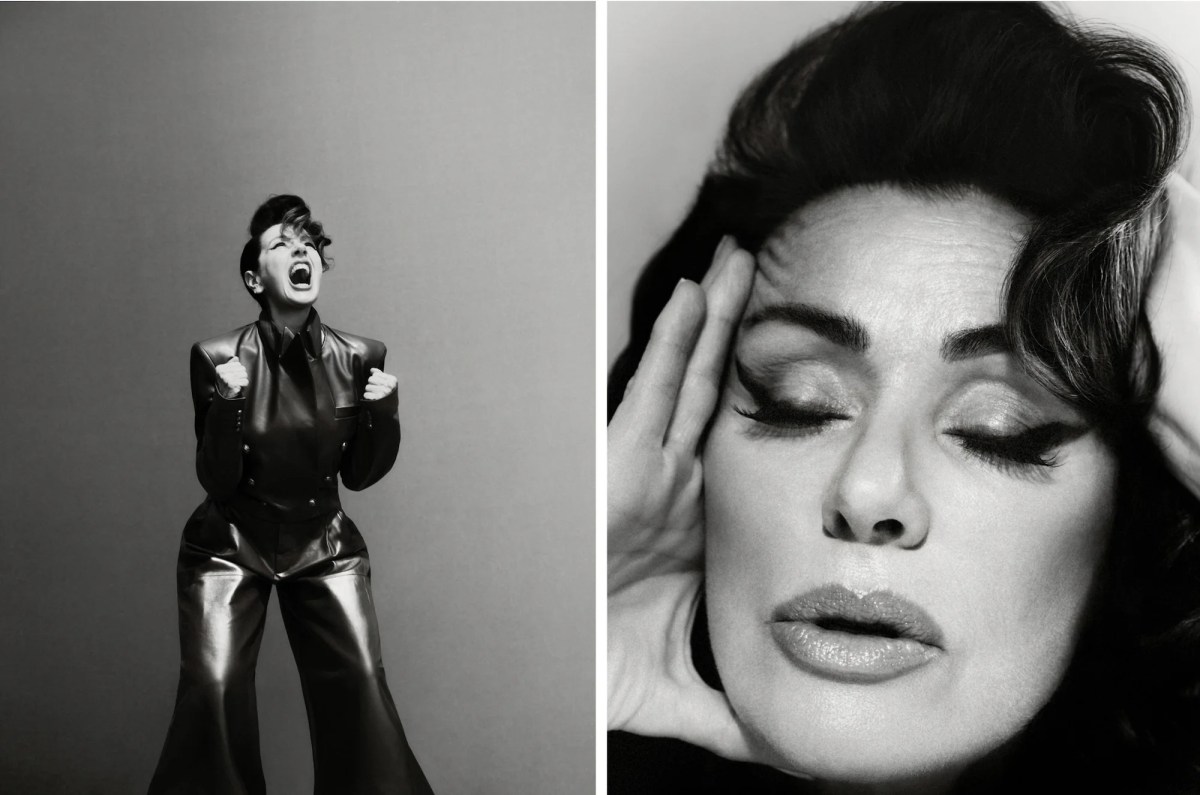
‘When I am dealing with art, and any sector of art, I will never tell them how to do their job. The reason they are there is to bring their vision to the table, their emotions, their ideas. I am in no position to tell anybody how to do their job creatively.’
On working with George Antoni: ‘I was relaxed, I felt safe, I didn’t feel judged. George was like “just do you”. There is no calculation, there is spontaneity, there is undeniable support and respect for each other … it is not about individual egos. And, I think that is reflected in the photo.
‘I’ve done countless photo shoots over the years, but never have I been so profoundly moved by the result. You have a rare gift for revealing the essence of a person, every manner, every story. You catch all of me in a single portrait.’
Tina Arena: Our cultural cringe is so stifling
‘That cultural cringe is so stifling. We are worthy. We do beautiful things and I would just love to see that validated, as opposed to this tall poppy thing, which has been at the forefront of our cultural landscape for a long time.
‘Australia, ultimately understanding it is a brilliant country with innovation on so many levels, and yet we have inherently adopted this thing of we are not good enough – we must celebrate others rather than ourselves.
‘I am no shrinking violet, and I deserve to be treated no different to any other female who has had success internationally.
‘We should continue to support and love each other through it genuinely – it is really important to me growing up pitted against other women – “You are not this, you’re not enough of that, why don’t you do this because someone else is” – No I don’t. I just need to be me, and that is what I want to impart.’
Tina Arena: Art is the highest form of hope, not AI
‘We stand at the edge of a terrifying new frontier, artificial intelligence, an era full of possibility and risk. I know technology isn’t going anywhere, but let me be clear, it must aid the artist, not replace them.
‘When I walked into my hotel room in Canberra, there was a book sitting on my coffee table, and the title stopped me in my tracks: Art is the highest form of hope. And I thought, yes that’s it. That’s what we’re fighting for. Art reminds us of what’s possible. It carries us through our darkest hours. It lifts us beyond survival and into meaning. That’s not something a machine can replicate, because hope’s not an algorithm. It’s a heartbeat.
‘A single voice, a single canvas, can hold an entire world of human feeling, and that’s not something you can replicate. You can’t program childhood. You can’t hold heartbreak. You can’t ask a machine to understand what it means to carry the full weight of human experience. Yes, AI is here, ladies and gentlemen, but it cannot, and it absolutely must not, replace the soul of the artist.
‘So, we can’t lose sight of that, because that matters. We owe it to ourselves and to our children, our grandchildren, our great grandchildren. Truth is not generated by another. Truth is lived. Let AI be a tool, not a counterfeit.
‘Let it serve the art, not strip it of his soul, because no matter how clever the technology gets, nothing will ever move us like a real voice telling a real story.’
